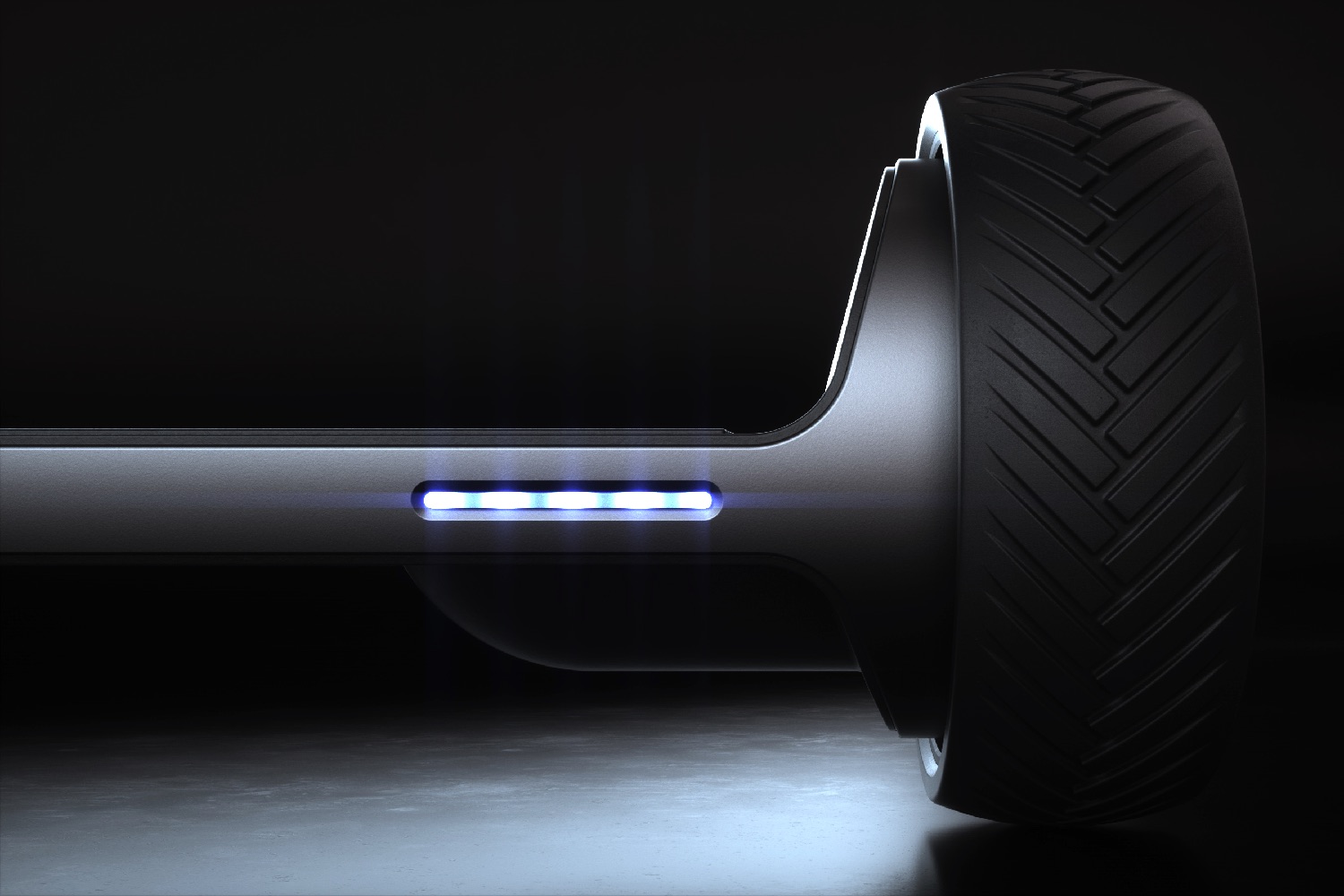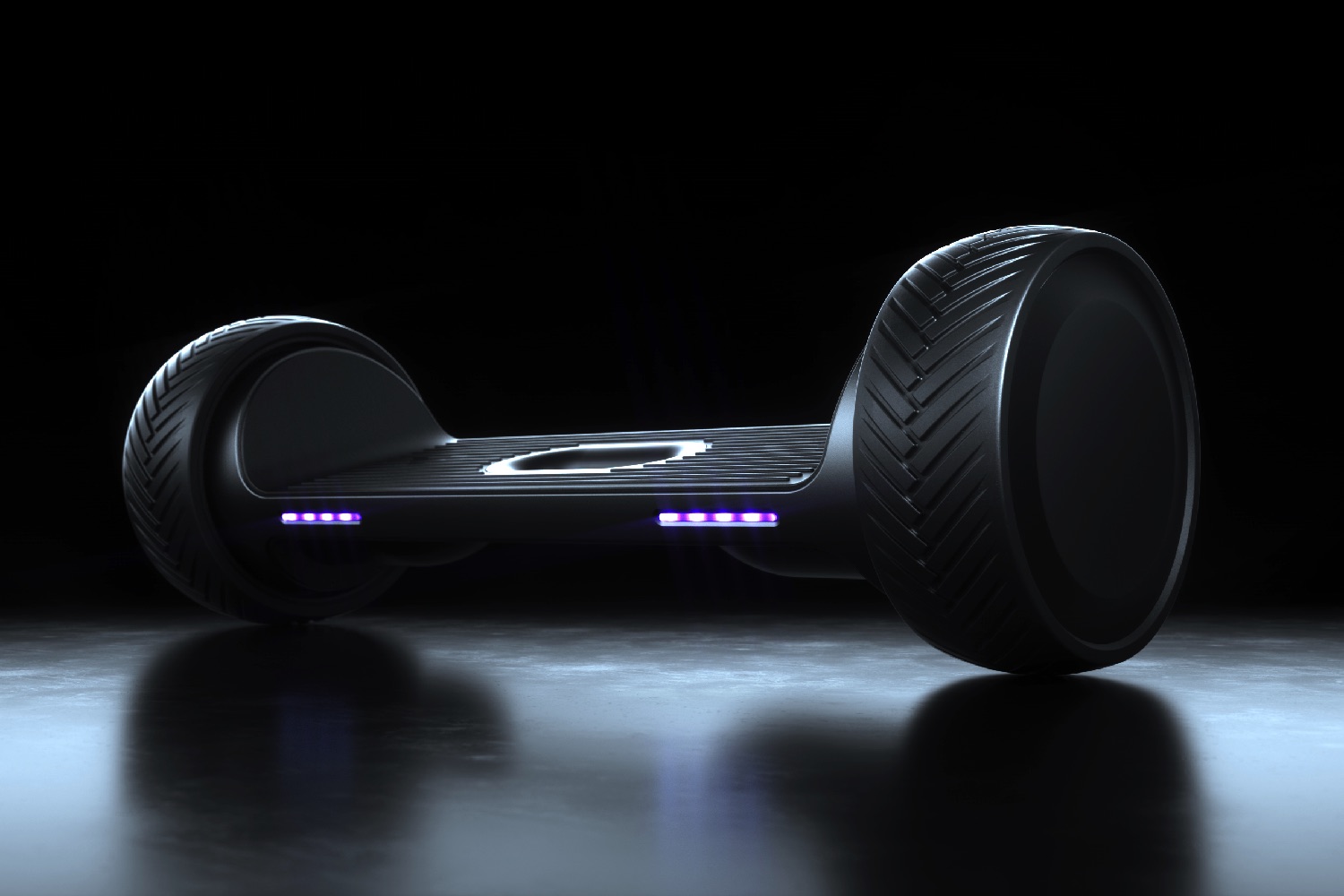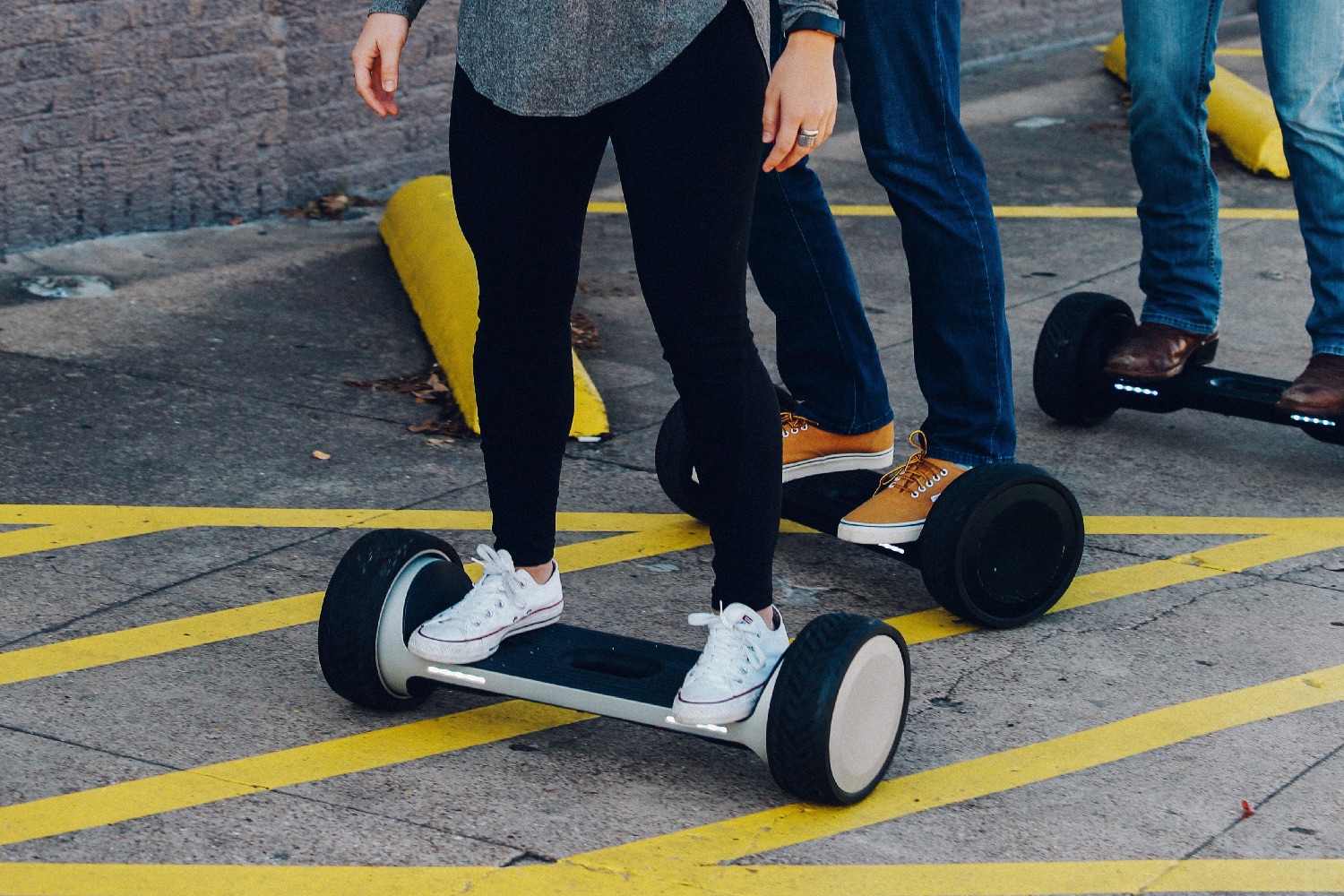“Though Moov looks like a sleeker version of the hoverboard, the riding experience is very different since it’s a rigid platform and has weight-based steering,” co-founder and engineer EJ Williams told digital Trends. “It’s a premium, American-made rideable that is both fun to ride and useful to get around.”
Moov differs to regular hoverboards in a couple of ways. At 9 inches in diameter and 3 inches in thickness, its wheels are bigger than those found on rival products. The result is greater stability, which is helped by a lower center of gravity for the part of the rideable that the user stands on. That’s a good thing because the Moov can travel faster than many hoverboards — at around 15 miles per hour — and is also designed for performing a number of sport-style tricks.
The other big change is the fact it boasts special sensors embedded into its floor mat, which let users control their ride by subtly shifting their weight. That’s a different approach to normal, but one that its creators hope will provide a more enjoyable riding experience.
“The current audience for rideables is pretty diverse,” Williams continued. “For urban commuting, you’ll see the young professional quite often. But for the recreational and sporty factor, you’ll get all ages. If you like to longboard, rollerblade, or surf and you’re into the latest technology, then this board is 100 percent for you. It’s just simply very fun to ride. Oh, and it’ll get you around if you need to commute.”
Radical Moov can currently be pre-ordered on Kickstarter, with prices starting at $1,099. Shipping is set to start this November.







